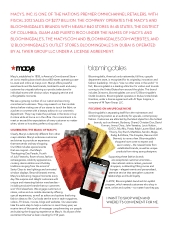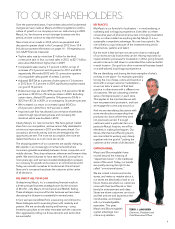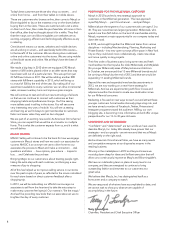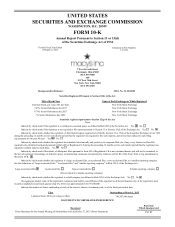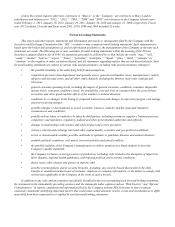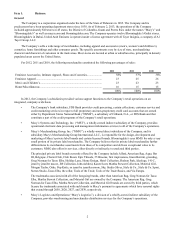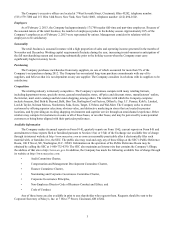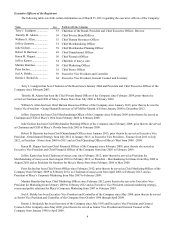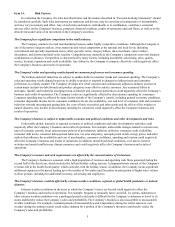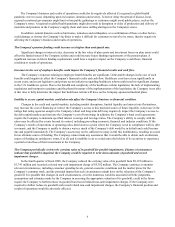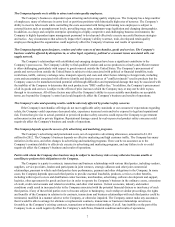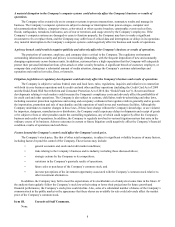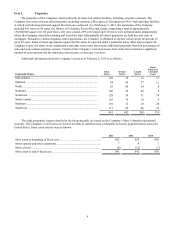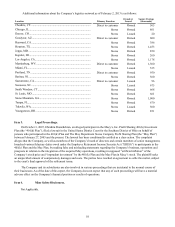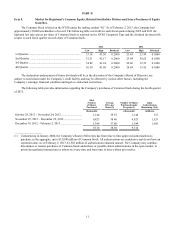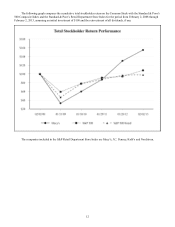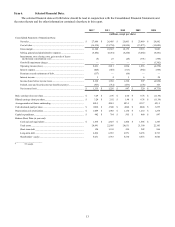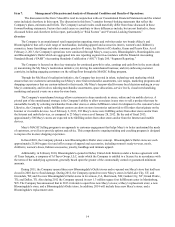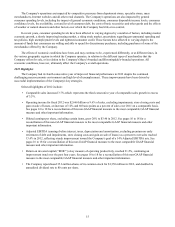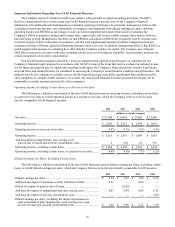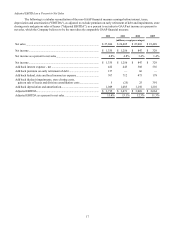Macy's 2012 Annual Report Download - page 12
Download and view the complete annual report
Please find page 12 of the 2012 Macy's annual report below. You can navigate through the pages in the report by either clicking on the pages listed below, or by using the keyword search tool below to find specific information within the annual report.7
The Company depends on its ability to attract and retain quality employees.
The Company’s business is dependent upon attracting and retaining quality employees. The Company has a large number
of employees, many of whom are in entry level or part-time positions with historically high rates of turnover. The Company’s
ability to meet its labor needs while controlling the costs associated with hiring and training new employees is subject to
external factors such as unemployment levels, prevailing wage rates, minimum wage legislation and changing demographics.
In addition, as a large and complex enterprise operating in a highly competitive and challenging business environment, the
Company is highly dependent upon management personnel to develop and effectively execute successful business strategies
and tactics. Any circumstances that adversely impact the Company’s ability to attract, train, develop and retain quality
employees throughout the organization could negatively affect the Company’s business and results of operations.
The Company depends upon designers, vendors and other sources of merchandise, goods and services. The Company's
business could be affected by disruptions in, or other legal, regulatory, political or economic issues associated with, our
supply network.
The Company’s relationships with established and emerging designers have been a significant contributor to the
Company’s past success. The Company’s ability to find qualified vendors and access products in a timely and efficient manner
is often challenging, particularly with respect to goods sourced outside the United States. The Company’s procurement of
goods and services from outside the United States is subject to risks associated with political or financial instability, trade
restrictions, tariffs, currency exchange rates, transport capacity and costs and other factors relating to foreign trade, including
costs and uncertainties associated with efforts to identify and disclose sources of "conflict minerals" used in products that the
Company causes to be manufactured and potential sell-through difficulties and reputational damage that may be associated with
the inability of the Company to determine that such products are "DRC conflict-free." In addition, the Company’s procurement
of all its goods and services is subject to the effects of price increases which the Company may or may not be able to pass
through to its customers. All of these factors may affect the Company’s ability to access suitable merchandise on acceptable
terms, are beyond the Company’s control and could negatively affect the Company’s business and results of operations.
The Company's sales and operating results could be adversely affected by product safety concerns.
If the Company's merchandise offerings do not meet applicable safety standards or our consumers' expectations regarding
safety, the Company could experience decreased sales, experience increased costs and/or be exposed to legal and reputational
risk. Events that give rise to actual, potential or perceived product safety concerns could expose the Company to government
enforcement action and/or private litigation. Reputational damage caused by real or perceived product safety concerns could
negatively affect the Company's business and results of operations.
The Company depends upon the success of its advertising and marketing programs.
The Company’s advertising and promotional costs, net of cooperative advertising allowances, amounted to $1,181
million for 2012. The Company’s business depends on effective marketing and high customer traffic. The Company has many
initiatives in this area, and often changes its advertising and marketing programs. There can be no assurance as to the
Company’s continued ability to effectively execute its advertising and marketing programs, and any failure to do so could
negatively affect the Company’s business and results of operations.
Parties with whom the Company does business may be subject to insolvency risks or may otherwise become unable or
unwilling to perform their obligations to the Company.
The Company is a party to contracts, transactions and business relationships with various third parties, including vendors,
suppliers, service providers, lenders and participants in joint ventures, strategic alliances and other joint commercial
relationships, pursuant to which such third parties have performance, payment and other obligations to the Company. In some
cases, the Company depends upon such third parties to provide essential leaseholds, products, services or other benefits,
including with respect to store and distribution center locations, merchandise, advertising, software development and support,
logistics, other agreements for goods and services in order to operate the Company’s business in the ordinary course, extensions
of credit, credit card accounts and related receivables, and other vital matters. Current economic, industry and market
conditions could result in increased risks to the Company associated with the potential financial distress or insolvency of such
third parties. If any of these third parties were to become subject to bankruptcy, receivership or similar proceedings, the rights
and benefits of the Company in relation to its contracts, transactions and business relationships with such third parties could be
terminated, modified in a manner adverse to the Company, or otherwise impaired. The Company cannot make any assurances
that it would be able to arrange for alternate or replacement contracts, transactions or business relationships on terms as
favorable as the Company’s existing contracts, transactions or business relationships, if at all. Any inability on the part of the
Company to do so could negatively affect the Company’s cash flows, financial condition and results of operations.


